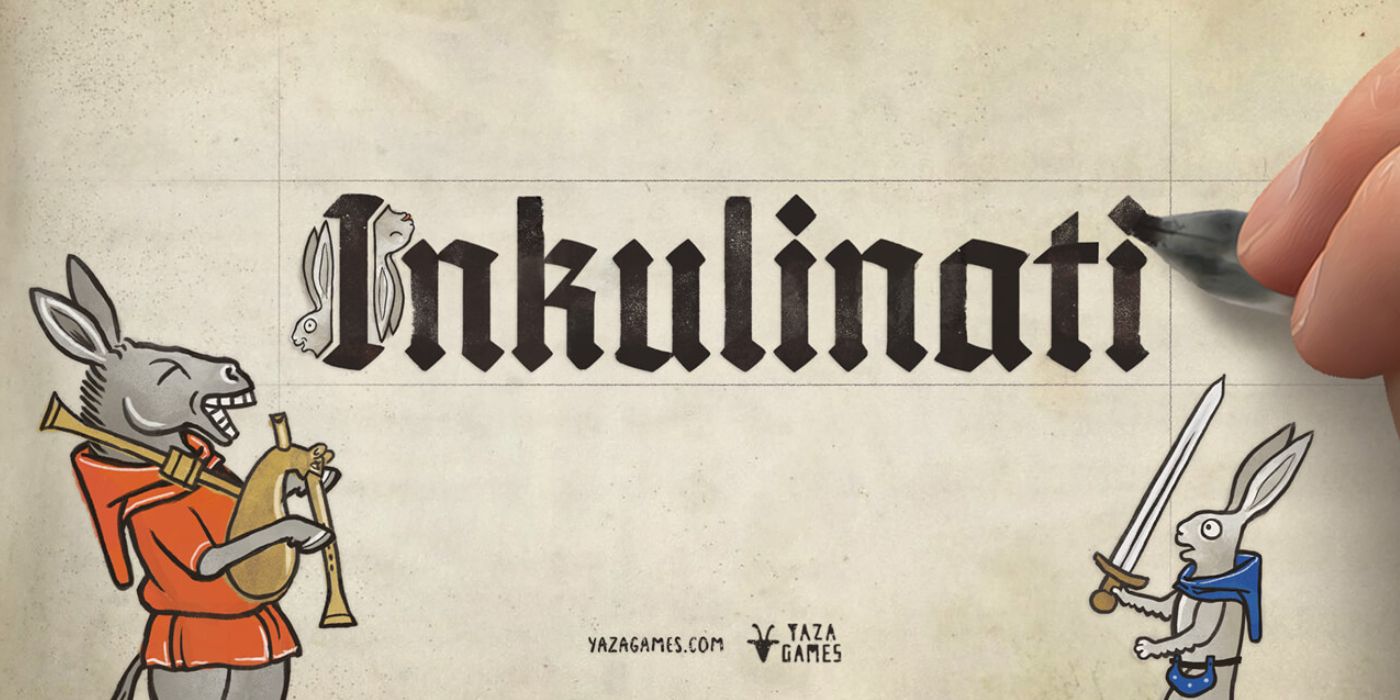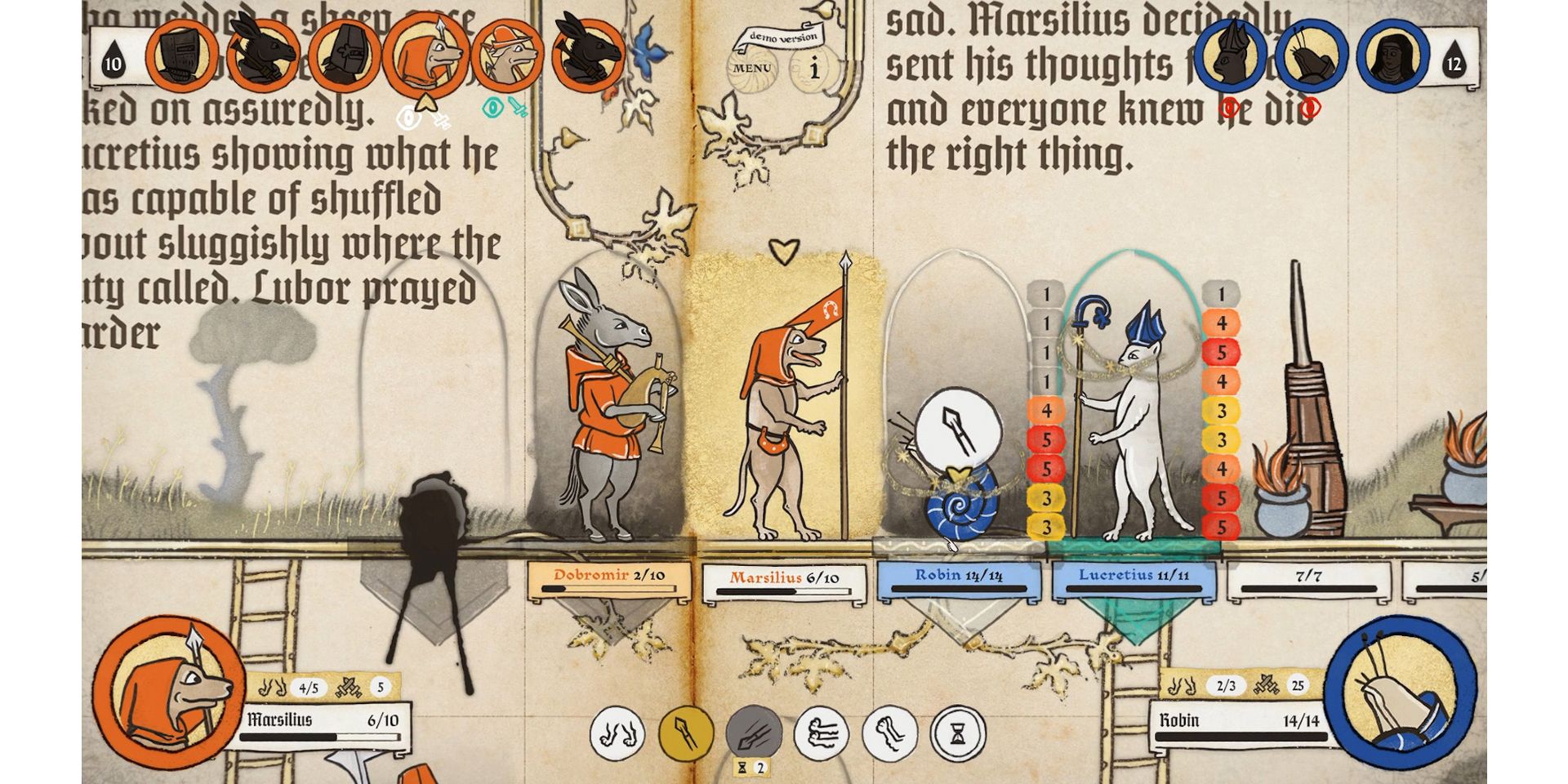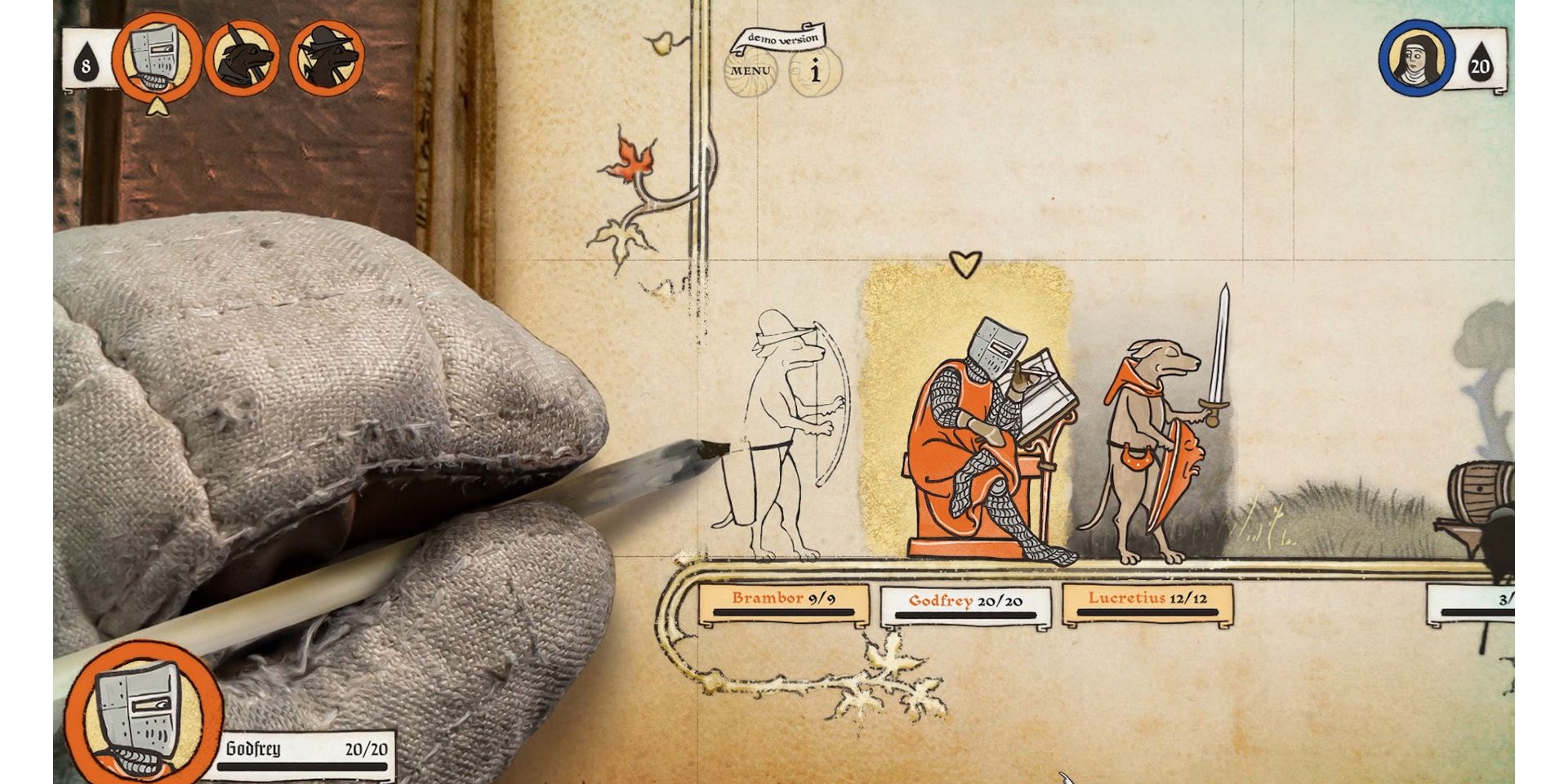Upcoming strategy game Inkulinati, Yaza Games' meld of tower defense mechanics and Darkest Dungeon-style turn-based combat, is notable for its use of hand-drawn graphics, similar to the bullet-hell platformer Cuphead. Unlike Cuphead, which was inspired by the art style of 1930s cartoons, the illustrated graphics, enemy units, and combat maps of Inkulinati are inspired by the historical art found within medieval books called "illuminated manuscripts," handwritten codices with beautiful artwork and lettering created by scriptorium monks during the Middle Ages.
Before the creation of printing presses, European manuscripts like the Book of Kells or the Lindisfarne Gospels were luxury items, expensive status symbols that took lots of time and effort to create. The majority of manuscripts in medieval times were created in the scriptoriums of medieval monasteries, whose monks bound together sheets of vellum parchment into thick volumes, then filled up the blank pages with intricate calligraphy and colorfully inked illustrations. The resulting books, many of which have lasted for hundreds of years without falling apart, are the texts known as illuminated manuscripts.
The process of "illuminating" a medieval manuscript was very grueling: absent the advantages of automated machinery and electric lightning, many "scriptores" were forced to work from sunup to sundown, utilizing as many hour of natural sunlight as they could to write legible characters. According to the Ancient History Encyclopedia, many of these priest-scribes, forbidden to speak during their shifts, would seek to escape their tedium by doodling humorously honest comments in the margins of their manuscripts - frequently complaints about their supervisors, sore fingers, and the quality of their quills, inks, and vellum. They would also draw bizarre images of people, animals, and plants in these margins, quirky, cartoonish characters that the combat units and characters of Inkulinati are closely modeled after.
Inkulinati Player Units Are Based From Medieval Marginalia
The premise of Inkulinati is that a pair of medieval calligraphers are fighting each other in a game of artistic strategy, using a magical form of ink to bring cartoon characters to life on a blank manuscript and then make them battle each other to the death. Some of these living illustrations are familiar figures from the middle ages: knights, kings, queens, nuns, monks, and peasants. Other figures are more bizarre and fantastical, in an Alice In Wonderland sense: sword-wielding dogs, cat bishops, and archer rabbits walking on two legs, along with jousting snails and trumpeters who blow with their rears.
Believe it or not, the bizarre units in Inkulinati (and in the illustrated interludes of Monty Python And The Holy Grail) are largely based on real-life illustrations sketched by those bored medieval scribes, who would scribble oddities such as walking animals, knights jousting snails, grotesque devil figures, and, of course, butt-trumpeters. Developers at Yaza Games have explicitly compared these marginalia illustrations to modern-day internet memes, being catchy images and concepts shared between makers of literature to inject levity and humor into their daily lives.
Inkulinati's Plot Is About A Group Of Magical Manuscript Illuminators
Inkulinati's tells the story of a conflict fought between immortal members of a secretive society of illuminators called the "Inkulinati." Using a magical form of pigment called Living Ink, players face off against rival Ink Masters, defeating them and acquiring new, more dangerous "Beasts" to draw onto their vellum battlefield. Plot-wise, the narrative of Inkulinati is surprisingly similar to the plot of the Yu-Gi-Oh! animated tv series, but with goose-quill pens instead of children's collectible cards. A Yaza Games gag documentary video portrays the secret society in Inkulinati with all the bombast and melodrama of "secret history" TV shows about the Knights Templar or the location of Atlantis.
Parodies of historical documentaries aside, this video effectively demonstrates the turn-based gameplay Yaza Games is currently working to implement, along with the honest love the devs have for the creativity of medieval illustrators . Just as the creators of Cuphead tried to use their game to share their appreciation of 1930s Fleischer Studio animation, so are the creators of Inkulinati striving to share the creativity and whimsy of artists from the Middle Ages with audiences of the modern day.



